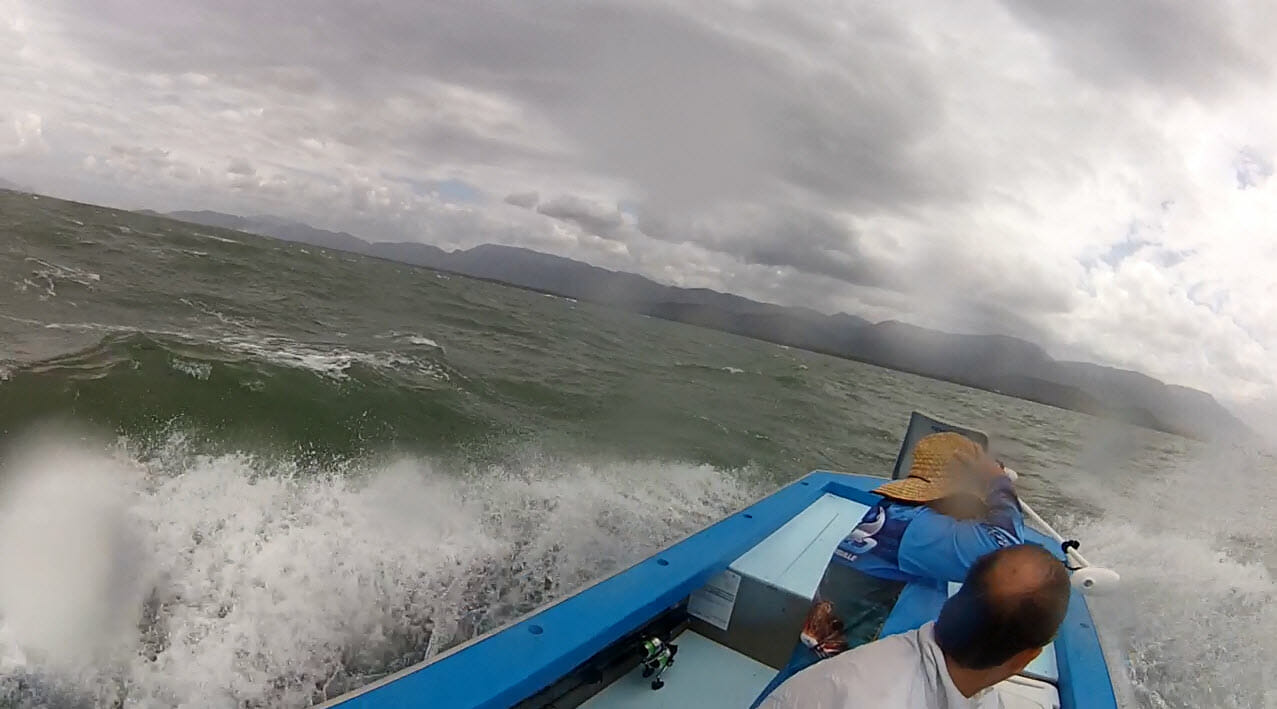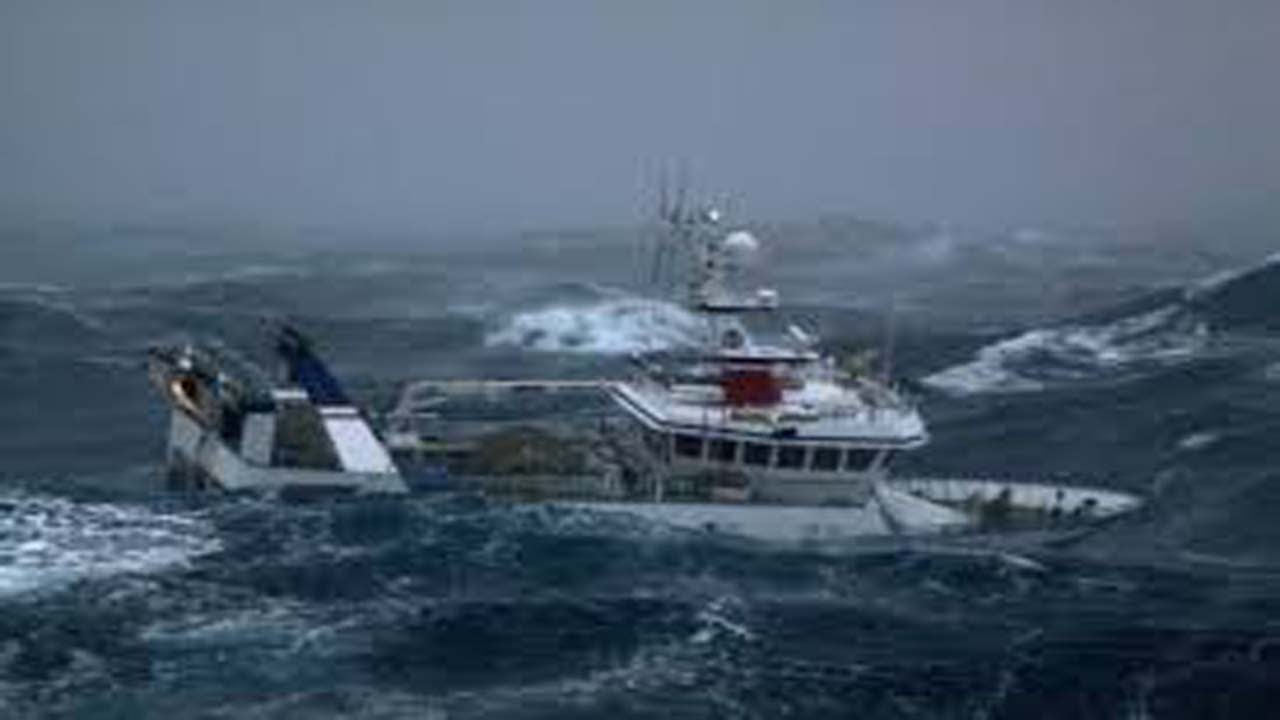Here are some tips on how to handle rough water in a small boat:
- Slow down. The faster you are going, the more likely you are to capsize. Slow down to a speed that you can comfortably control.
- Take waves at an angle. Don’t try to go straight through waves. Instead, approach them at a 45-degree angle. This will help you to ride up and over the waves, rather than slamming into them.
- Stay low in the boat. The higher you are in the boat, the more likely you are to be tossed around. If possible, sit or lie down in the bottom of the boat.
- Secure any loose objects. Loose objects can become dangerous projectiles in rough water. Make sure to secure anything that could move around, such as fishing gear, coolers, and life jackets.
- Be prepared for anything. Rough water can be unpredictable. Be prepared for anything, such as engine failure, flooding, or capsizing.
If you are caught in rough water, it is important to stay calm and take things slow. Do not panic, and do not make any sudden movements. By following these tips, you can increase your chances of staying safe.
Here are some additional tips that may be helpful:
- Wear a life jacket. This is the most important thing you can do to stay safe in rough water.
- Check the weather forecast before you go out. If there is a chance of rough water, it is best to stay ashore.
- Let someone know where you are going and when you expect to be back. This way, if you do not return on time, someone will know to look for you.
- Be aware of your surroundings. Watch out for other boats, rocks, and other hazards.
- If you start to feel seasick, take a break from the water. Go below deck or sit in the stern of the boat, where the motion is less pronounced.
- If you do capsize, stay calm and do not panic. Try to right the boat if possible. If you cannot right the boat, stay in the water and wait for help.
Rough water can be defined as any kind of water that is not smooth or flat. This can include chop, white caps, swell, and waves. All of these types of water can make for a challenging and uncomfortable ride in a small boat.
The key to handling rough water in a small boat is to have the proper gear and to know how to use it.
One of the most important pieces of gear for rough water is a life jacket. It is crucial that everyone on board is wearing a properly fitting life jacket at all times.
In addition to life jackets, there are other items that can help make your trip more comfortable and safe such as spray skirts, bilge pumps, and anchor systems.
If you find yourself in rough water in a small boat, the first thing you should do is assess the situation. Is the water too rough for your boat? Are you in danger of capsizing?
If so, it’s time to head for calmer waters.
If the water isn’t too rough, but you’re still feeling uneasy, there are a few things you can do to help stabilize your boat. First, make sure everyone on board is seated and not moving around unnecessarily.
Second, if you have any gear or equipment onboard that can be secured, do so. Finally, try to keep the boat pointed into the waves as much as possible – this will help prevent them from swamping your vessel.
Rough water can be scary, but if you stay calm and take precautions, you’ll be able to get through it safely.

Credit: ryanmoodyfishing
How Do Small Boats Handle Waves?
When it comes to handling waves, small boats are actually pretty similar to larger ones. The main difference is that they’re less stable and can be capsized more easily. That’s why it’s important to be extra careful when waves are high and conditions are rough.
Here are a few tips for handling waves in a small boat:
1. Avoid going out in high winds and big waves if possible. If you must go out, make sure you have proper safety gear onboard and know how to use it.
2. Pay attention to the direction of the waves. You’ll want to position your boat so that the waves are hitting it perpendicular (at a 90 degree angle). This will help prevent your boat from being capsized.
3. Use caution when turning into or away from the waves. These maneuvers can destabilize your boat and make it more likely to capsize.
4. Stay alert and be ready to adjust your course at all times.
Waves can come unexpectedly and change direction quickly, so you need to be prepared to react accordingly.
How Do You Drive a Small Boat in Rough Seas?
It can be difficult to drive a small boat in rough seas. The waves can be unpredictable and dangerous. Here are some tips to help you navigate these waters:
1. Check the weather forecast before heading out. This will give you an idea of what to expect in terms of wave height and direction.
2. Choose a calm day to head out if possible.
Rough seas are more manageable when the wind is low.
3. Use caution when entering into areas with high waves. Approach slowly and be ready to turn back if necessary.
4. Keep your speed under control at all times. Faster speeds make it harder to maneuver through waves safely.
How Do You Drive a Boat on Choppy Water?
Assuming you are referring to a small boat or yacht, the best way to handle choppy water is to go slowly. This will help prevent the waves from rocking the boat too much and making it unstable. You should also avoid turning sharply, as this can cause the boat to tip over.
If you need to change directions quickly, it is best to use the rudder instead of the steering wheel.
Is It Better to Go Fast Or Slow in Choppy Water?
There is no definitive answer to this question as it depends on a number of factors, including the type of boat you are using, the conditions of the water, and your own personal preferences. In general, however, it is usually best to go slower in choppy water as this can help to reduce the amount of spray that comes up from the waves and make for a more comfortable ride. Additionally, going slower can also help you to better control your boat in rough conditions.
How to drive a boat in rough water | Big sea throttle techniques explained | Motor Boat & Yachting
How to Drive a Boat in Rough Water
Assuming you would like a blog post discussing tips for driving a boat in rough water:
When the waves are crashing and the wind is howling, it can be tough to keep your boat on course. But with a little know-how, you can master driving in rough water.
Here are some tips:
1. Use wave direction to your advantage. If the waves are hitting your boat from the side, use them to help push you in the direction you want to go.
2. Don’t fight against big waves. Instead, aim to ride over them by angling your bow up and into the wave. Then let the wave pass beneath you before resuming your original course.
3. Stay pointed into the waves as much as possible so that they don’t catch you broadside and capsize you. This means constantly making small adjustments to your heading as conditions change around you.
Conclusion
In small boats, it is important to handle rough water carefully. When waves are high and the wind is strong, it can be difficult to control your boat. Here are some tips for handling rough water in a small boat:
-Reduce speed when waves are high. This will help you maintain control of your boat.
-Use the wind to your advantage.
If you can, position your boat so that the wind is blowing against the waves, rather than with them. This will help keep your boat from being pushed around by the waves.
-Be careful when turning.
It is easy to lose control of your boat when turning in rough water. Make sure you turn slowly and deliberately, so that you don’t capsize or lose control of your vessel.
